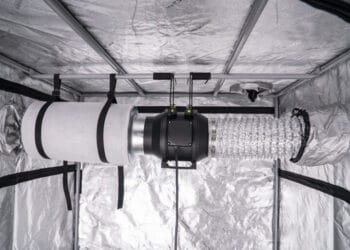Harvesting cannabis buds is a critical phase in the cultivation process, marking the transition from nurturing to enjoying the fruits of your labor. Whether you are a novice grower or a seasoned cultivator, understanding the nuances of harvesting can significantly impact the quality and potency of your final product. In this comprehensive guide, we will delve into every aspect of cannabis harvesting to ensure you get the most out of your crop.
1. Understanding the Right Time to Harvest Cannabis
The Importance of Timing
Timing is everything when it comes to harvesting cannabis. Harvest too early, and the buds will be underdeveloped and less potent. Harvest too late, and the THC content may degrade, leading to a less desirable product.
Signs Your Cannabis is Ready
To determine the optimal harvest time, look for the following indicators:
- Trichomes: These tiny, crystal-like structures on the buds and leaves change color as the plant matures. Initially clear, they turn milky white and finally amber. For maximum potency, most growers aim for a mix of milky and amber trichomes.
- Pistils: These hair-like structures on the buds will change from white to a reddish-brown color. When about 70-90% of the pistils have darkened, it’s usually a good time to harvest.
2. Pre-Harvest Preparations
Flushing Your Plants
Two weeks before harvest, begin flushing your plants with plain water to remove any residual nutrients. This ensures a cleaner, smoother smoke and enhances the flavor profile.
Gathering Tools
Ensure you have the right tools ready for harvesting, including:
- Sharp scissors or pruning shears
- Latex gloves
- Drying racks or hangers
- Clean workspace
3. Harvesting Techniques
Wet Trimming vs. Dry Trimming
There are two primary methods of trimming your cannabis: wet trimming and dry trimming.
- Wet Trimming: Involves trimming the buds immediately after cutting down the plant. This method can be easier as the leaves are still pliable.
- Dry Trimming: Involves hanging the whole plant to dry first and then trimming. This method can result in a smoother smoke but can be more time-consuming.
Step-by-Step Harvesting
- Cutting the Plant: Using sharp scissors or pruning shears, cut the plant at the base.
- Trimming Leaves: Remove the large fan leaves first, then proceed to trim the sugar leaves.
- Drying: Hang the trimmed branches upside down in a dark, well-ventilated space to dry.
4. Drying and Curing Cannabis
Importance of Proper Drying
Proper drying is crucial to prevent mold and to preserve the cannabinoids and terpenes.
Drying Process
Hang your trimmed buds in a dark room with a temperature of 60-70°F and a humidity level of 50-60%. Ensure there is adequate airflow, but avoid direct fans on the buds.
Curing for Maximum Quality
After drying, cure the buds by placing them in airtight jars. Open the jars daily for the first two weeks to release any built-up moisture. This process, known as burping, is essential for developing the best flavor and potency.
5. Storing Your Harvest
Ideal Storage Conditions
Store your cured cannabis in a cool, dark place. Use airtight containers to maintain freshness. Avoid plastic bags or containers as they can affect the flavor and potency.
Long-Term Storage Tips
For long-term storage, consider vacuum-sealing your buds and storing them in a freezer. This method can preserve your cannabis for several years without significant loss of quality.
6. Troubleshooting Common Issues
Mold and Mildew
One of the biggest risks during drying and curing is mold. To prevent this, ensure proper ventilation and avoid high humidity levels.
Overdrying
Overdrying can lead to brittle buds and loss of potency. To avoid this, monitor the drying process closely and adjust conditions as needed.
7. Enhancing Potency and Flavor
Using Terpene Boosters
Terpene boosters can be added during the curing process to enhance the flavor and aroma of your cannabis.
Buy your Terpene Cali Terpenes
Proper Handling
Handle your buds with care to avoid trichome loss. Use gloves to prevent oils from your skin from affecting the buds.
8. Harvesting for Different Strains
Indica vs. Sativa
Different strains have different harvesting times. Indicas generally mature faster than sativas. Research the specific needs of your strain for optimal results.
Autoflowers
Autoflowering strains have a set lifecycle, typically 8-12 weeks from seed to harvest. Monitor these plants closely as they can switch to flowering without changes in light cycles.
Get your seeds Royal Queen Seeds
9. Legal Considerations
Compliance with Local Laws
Ensure you are compliant with local laws regarding cannabis cultivation and harvesting. This includes understanding plant limits, harvesting guidelines, and storage regulations.
Staying Discreet
Harvesting can be a smelly process. Consider using carbon filters and maintaining a discreet growing operation to avoid drawing unwanted attention.
10. Maximizing Yield and Quality
Nutrient Management
Proper nutrient management throughout the growing cycle can significantly impact your final yield. Use high-quality fertilizers and follow a feeding schedule.
Environmental Control
Control the growing environment meticulously. This includes maintaining proper temperature, humidity, and light levels.
Training Techniques
Training techniques like topping, LST (Low-Stress Training), and SCROG (Screen of Green) can maximize light exposure and improve yield.
Conclusion
Harvesting cannabis buds is both a science and an art. By understanding the optimal timing, using the right techniques, and taking proper care during the drying and curing processes, you can ensure a high-quality, potent final product. Remember to stay informed about the specific needs of your strains and comply with local laws to have a successful and enjoyable harvest. Happy growing!








